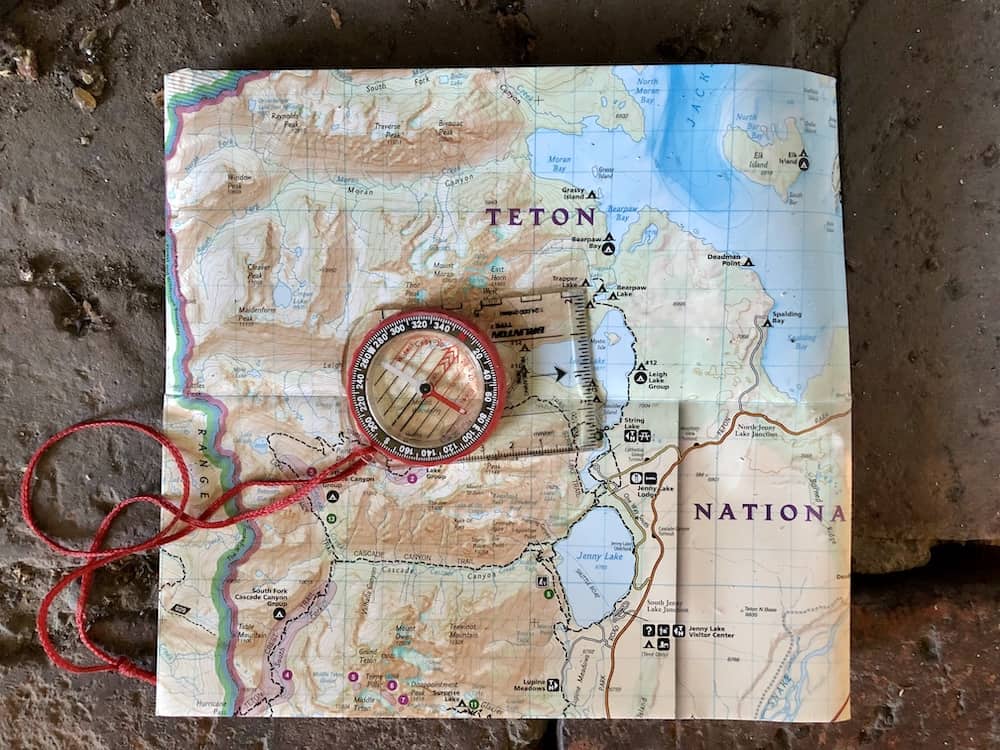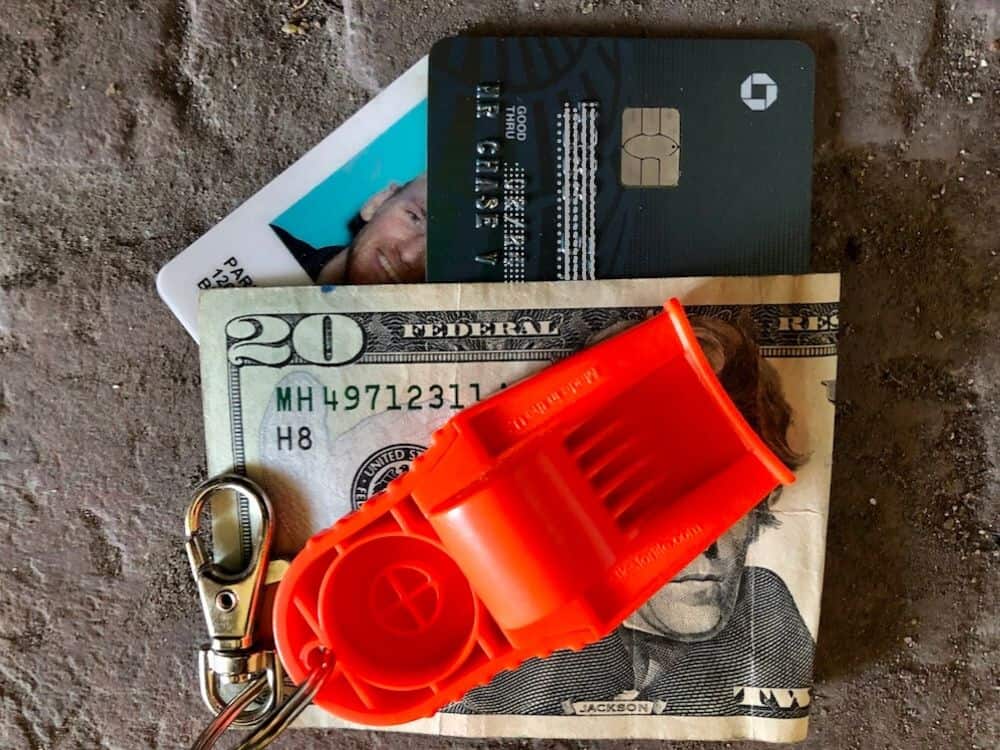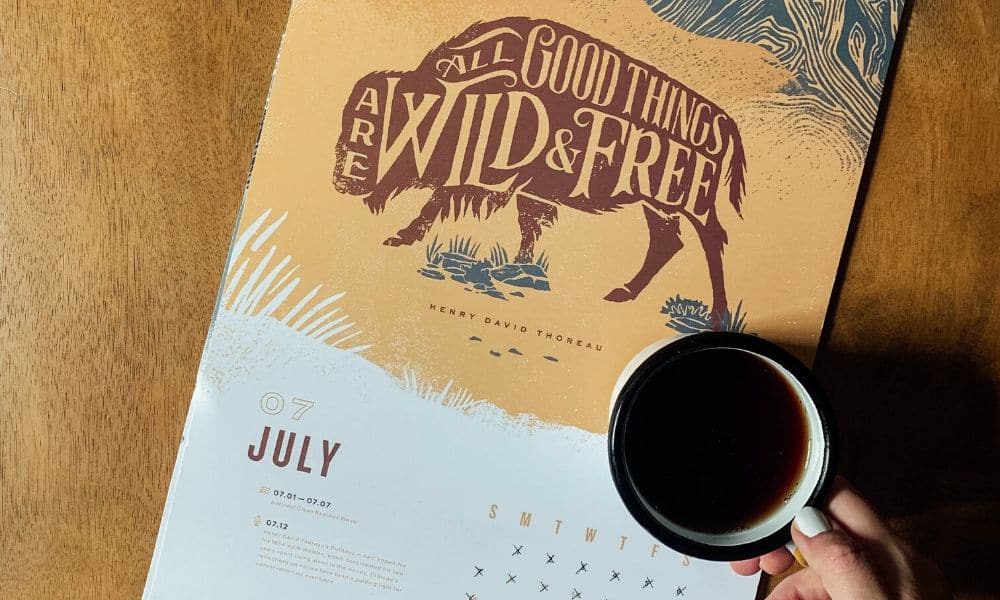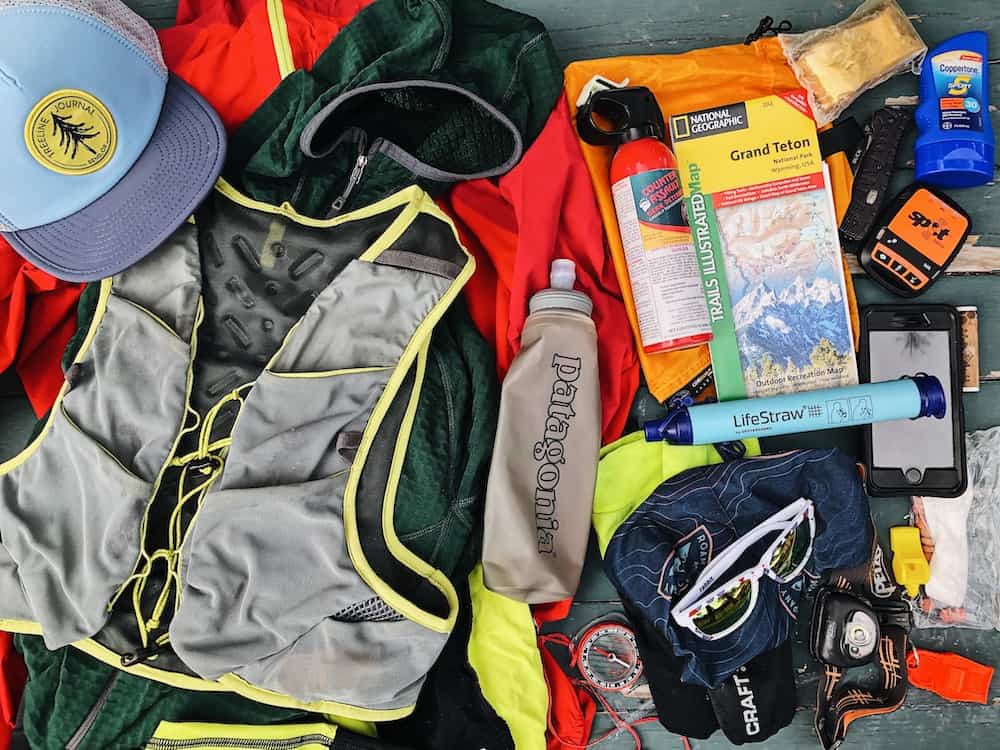Backcountry Safety for Ultra Runners | Part 3: What Gear Should I Bring?
By Chase Parnell — June 9, 2020
Welcome to the third and final part to this series on backcountry safety for ultra runners. Part 1 addressed backcountry navigation using the Gaia GPS app and Part 2 focused on satellite electronic notification devices and the Spot Gen3. Those two tools each really deserved a thorough post because, from my experience, there’s a bit of a barrier to entry and it takes a bit of convincing that the technology is worthy of the price tag.
In this article, I’d like to present three different gear lists; one for everyone that includes only the absolute essentials, one for the cautious runner that doesn’t mind a few extra items to ease any potential discomfort or anxiety, and one for the overly overly cautious person who’d bring their entire house with them if it fit in their pack.
Note: This is for ultra runners so the lists will differ from a backpacker or fastpacker gear list. We’re talking about runners who enjoy going out for 20/30/40 mile runs in remote areas but don’t necessarily intend to spend the night out in the woods.
The bare necessities: the gear EVERYONE should have in the pack

Water: This one is pretty obvious. The fuzzy part is how much water to bring. You might be constrained by the size of your pack or by how much weight you feel comfortable carrying on your back. Temperature and weather play a huge role in this equation as well. My recommendation is 16oz for every hour of activity in the summer and hotter temperatures, 12oz for every hour of activity during cooler months. If you plan to refill your bottles or water bladder during your run, confirm that the source is flowing during the time of year you are venturing out. You can survive in the woods without a lot of things, but water is not one of them.
Food: Typically, 200-300 calories per hour is a reliable rule of thumb. If you’re going out for 8 hours, bring 1600-2400 calories. And honestly, I’d lean more towards 2400 calories because you want to be prepared for any unforeseen circumstances. For example, what if you get turned around and accidentally tack on a handful of miles? Or what if there are sections of the trail that have a ton of downed trees or snow that you weren’t anticipating and it adds a few additional hours to your run. Worst case scenario, you end your run with a handful of gels left over that you can save for your next run. Sure, you carried an extra ounce or two per gel, but in my opinion, the comfort in knowing you have the calories if you need them makes the extra weight well worth it.
Layers: You really need to be prepared with the layers required should you have to spend the night out in the elements. Most likely, you will never have to experience this, I know I haven’t, but it happens enough to take it seriously.
What is the worst type of weather you could realistically have during your run? Be prepared for it. What are the coldest temperatures you might experience during your run? Be prepared with enough layers given the potential conditions. Say you’re on top of a mountain peak and terrible weather rolls in that forces you to bunker down and wait it out. You should be able to do that if needed. You don’t want to have to make a risky decision to run downhill in a lightning storm just because you didn’t have the gear to hunker down for a few hours.
I’ll never forget an experience I had at the Never Summer 100k in Northern Colorado. There were three of us fairly close together when lightening and heavy rain starting falling all around. We went from 75 degrees and overheating to soaked and freezing within minutes. It didn’t feel safe to run while lightning was striking so closely, so of course, a stationary soaked runner is going to get cold quickly.
Thankfully, despite the warm forecast, I had a light jacket for myself and I loaned a long sleeve to one guy, but didn’t have anything for the third guy who suffered through it in his tank top, shivering and freaked out by the lightning. Eventually a woman caught up to us and had the sense to say it was too cold to wait out the storm so we jumped in with her and made it safely to the next aid station. Unfortunately, the guy with only the tank top went hypothermic and had to drop out of the race. They piled blankets on him and he still shivered uncontrollably.
Again, you want to be prepared for the worst. Yes, it sucks bringing a few extra pieces of clothing in the pack, but it might save your life! A beanie and gloves, base layer, light jacket, and full body rain shell is sufficient for almost any circumstances you might find yourself in.
Map and Compass: I’m definitely a huge fan of navigational apps on your phone like the Gaia GPS app that I wrote about in part one of this series. But it’s important to not rely on those exclusively. What happens if your phone dies, breaks, freezes, or falls in the lake? You really need to always bring along a traditional old fashioned paper map, and you need to be able to use it!
Can you find yourself on a map by triangulating your location with a compass? If not, it’s worth taking the time to watch this YouTube video and attend the next map and compass seminar at your local REI.
Headlamp: Again, we aren’t planning on spending a night out, but if you have to, you are going to be very happy if you brought along a headlamp. Nothing like impending darkness to send you into a panic. In my opinion, the more lumens, the better.
Bare Necessities PLUS: a few additional items you won’t regret having

All the above plus the following:
Satellite Emergency Notification Device: Essentially, this is an emergency beacon that allows you to contact and request search and rescue if something goes terribly wrong. I respect the fact that some people enter the wilderness to get away from technology and want to rely 100% on themselves, and for that reason, I’m not saying that everyone absolutely needs this type of product. But if you want a security blanket and yet another tool that could save your life, a Spot Tracker or Garmin inReach are two excellent products to consider.
First Aid Kit: For the most part, I’ve always been of the opinion that minor cuts, blisters, chafing, and lost toenails can be dealt with after the run is over. And even if you fall and slice open your knee pretty good, you can probably hobble back to the trailhead, hop in your car, and dress the wound after a warm shower. But I also understand that there’s a bit of risk to that approach and that some people simply don’t want to put up with more discomfort than they need to. So in your first aid kit, I’d recommend having (1) bandages, (2) ibuprofen, (3) antibiotic ointment, (4) moleskin, (5) blister pads, and (6) some anti-chafe cream at a minimum. That way, if something comes up, you can address it and do what you can to not make matters worse. This is especially helpful if you know you have another big run planned for the next day and minimizing the damage might pay dividends on day two.
Water Filter or Treatment Tablets: Clean water is not typically a life-or-death factor. If you’re thirsty enough, you won’t give a rip whether or not your water has been treated or not. Giardia is real, it’s a major pain, but when you’re in survival mode, it feels like a non-issue. Most runs into the wilderness or backcountry can be accomplished by carrying all the water you’ll need from the very start. That said, recently I’ve been using soft flask bottles that you can fill up from a stream and then as you squeeze the water through the cap there is a built in filter that works great.
So if you’re someone who likes to start the run with less water and fill up at tried and true sources along the way, definitely bring a filter or other water purification strategy of some sort.
Space Blanket: If I had to choose between extra layers or a space blanket, I’m choosing the extra layers. But honestly, both would be better. If you break a foot and need to spend the night out, putting all your layers on and then wrapping yourself up in a space blanket should be sufficient to get you through the night unless the weather is very extreme.
Sunscreen/Mosquito Repellant/Lip Balm: Here too, we have some preventative items that won’t save your life but can save you from a lot of discomfort. For the sweaty hot mess that is a runner after six hours of running, one application of these products before your run is likely not enough. Just toss some small tubes of this stuff in your first aid kit and you’ll know if you need to reapply it or not based on the conditions on the day.
Eye Protection: Sunglasses are recommended, even on overcast days. Just ask my mother-in-law who was a career botanist for the Forest Service. Long hours outside, especially in high alpine terrain, does a number on your eyes. I like to bring sunglasses and wear them for most of the run, but I’ll take them off or place them on my hat if I’m navigating technical terrain. I’ve never found a lens that makes my sight clearer than an unobstructed view. Another thing to keep in mind is snow-blindness. If you are going to be at high elevation and crossing lots of snow fields or glaciers, make sure to wear close-fitted sunglasses that block 100% of UV rays.
Waterproof Matches: Starting a fire–should you need one–is made a whole lot easier with matches. None of this rubbing sticks together to create and ember and all that garbage you see on TV. Matches weigh essentially nothing and a fire to warm you through the night could be a huge comfort.
Bear Spray: Bears aren’t the only thing you might want to spray in a scary encounter. And honestly, you’re more likely to use it on another human or a moose or someone’s dog. Bear spray canisters fit nicely into a running vest pocket, although there’s always that chance that you could fall on your bear spray and discharge it onto your own face. Trust me, I’ve cracked a rib on a can of bear spray, although thankfully it didn’t go off. All in all, it’s just nice to have some form of protection to placate the waves of irrational fears you’re sure to experience, especially when roaming alone.
Cellphone: This might seem like another no-brainer, but again, I totally respect people’s wishes to go out into the wilderness to specifically get away from technology and rely only on their own skills and merits. But if you’re in a place where you know you’ll be popping in and out of cellphone coverage, it might worth bringing along so you can make a quick phone call if needed. Say you don’t need a full-blown search and rescue but you want to let your partner know that you’ll be significantly late. That can save a whole lot of needless worry for all involved.
Toilet paper and baggie: Pack it in, pack it out. Leave no trace. No used toilet paper should be left anywhere but in the trash can at the trailhead. I don’t even like the idea of biodegradable toilet paper. What often happens is people don’t bury it properly and the wind picks it up and conveniently strings it along the singletrack trail for everyone to see. Yes, it’s gross to put your used TP back into a plastic bag, but feel free to double or triple bag it to cover all your bases.
Bare Necessities PLUS PLUS: everything but the kitchen sink

All the above plus the following:
Change of Socks: Bless your heart. Sometimes a change of socks late in a long run is just the thing to keep a little pep in your step and help you see it through without an epic meltdown. Or maybe you just can’t stand wet socks and you always tear your feet up after stream crossings, so you bring an extra pair for that one creek you need to ford. I can’t say I’ve ever brought along an extra pair of socks but I won’t judge you if you do.
Bivy sack or other sleeping structure: for a pretty penny, you can get a bivy sack that weighs less than a pound and scrunches down into the size of your fist. Toss one in your pack and you’ll survive the night in everything but the most extreme conditions.
Knife: in case you get your arm stuck between two boulders, at least you’ll have a sharp blade to amputate. Morbid, I know. Or what if you lose your hat in a storm and you need to cut some fabric off your backpack to form an impromptu hat to shade your dome from the sun? Or say you expel your bear spray and all it does is piss the bear off. You now have a backup protection strategy. A useful tool to consider.
Backup Batteries: Your cellphone, headlamp, and Spot Tracker are all battery powered. Sure you charged them full before embarking, but just in case, backup batteries could come in handy. Power blocks for your cellphone are fairly light, and I’d recommend getting lithium ion batteries for your headlamp instead of your standard fare to save yourself a few ounces of weight.
Whistle: Start tooting on your whistle and someone will eventually come find you. The sound will travel much farther than your cries for help and you’ll expend much less energy.
Prescription Glasses: This is something I’ve actually gotten fairly paranoid about. I’m a contact lens wearer and I’ve often worried about tearing a lens on a long run. Again, not the end of the world but it’d be a real pain to suffer through 20 trail miles with one eye.
Cash/ID/Medical Information: You never know when you might need some money to barter with or to get a ride back to the trailhead when you pop out on a road and have no idea where you are. Also, your ID and a piece of paper explaining any medical precautions can come in handy if for whatever reason you lose consciousness and end up in the hospital.
Are You Prepared for Your Long Runs in the Backcountry this Summer?

I hope you picked up some good ideas or were encouraged to pack a few extra items on your next outing. These lists can obviously be tweaked based on experience level and type of adventure. A theme that I hopefully drove home was that, sure, some of this stuff seems redundant or overly cautious, but what’s a few extra ounces in the grand scheme of things? Let’s try to err on the side of caution and keep making it safely home to our loved ones, okay?
Let me know what you think about the lists! Did I miss anything major? Please feel free to leave a comment below or contact me through our socials. We’d love to hear from you! I don’t know about you, but I’m always scheming the next big run. The high country is opening up and I can’t wait to make new 2020 memories.
If you’d like to support Treeline Journal and keep this thing afloat, we have options: (1) Share our content with your friends; (2) Sign up for our weekly Rise & Grind Newsletter; (3) Pick up one of our brand spanking new running hats or stickers from our shop; or (4) become a Patron through Patreon for as little as $2 a month! Thank you so much!



Thanks for this list, Chase. I think this is spot on. Based on my my own experience, I’d have a few recommendations for changes.
1. The whistle, first-aid kit, and space blanket or bivy are absolute essentials to me and part of the most basic kit for every run. You need to be able to make youself heard, take care of any wounds, and a blanked is oftentimes more versatile than a base layer (e.g. shareable with others).
2. Your ID should also be a constant on every run to help first responders to identify you should something go really wrong. It’s a 5g plastic card so weight and volume should not be a concern at all.
As you said though, the selection of gear always depends on the runner and the run.
Great points. Thanks for sharing that. Yeah, parsing the items out into these different categories was harder than I thought! A lot of nuance. Not that it’s a comprehensive list or anything, but’s interesting looking at the UTMB required gear list now: https://utmbmontblanc.com/en/page/206/faq-obligatory-equipment.html They include a whistle and space blanket. You could almost just put those in your pack and never take them out I suppose. They’re so light. Good stuff. Thanks again!
The only thing I would change is bear spray. Bear spray is designed to frighten and deter a bear, it is not more effective than regular pepper spray and it is so much larger.
Hi Chase, great article! My only add for backcountry first aid kit is a roll of 1″ med tape. It’s super versatile to close up any serious gashes and good for temp gear repairs as well. I do a fair number of long runs in remote areas and am sometimes shocked at how little some folks carry. I’ve been guilty myself of cutting back on gear for weight savings and after hundreds of runs with no incidents one can create a mental model (Deep Survival by L. Gonzales) where that gear is not important. I’m still not a kitchen sink kind of guy, but my mental model was reshaped after a broken tib/fib on the trail….a plain old mundane single track and a bad step. I saw first hand what it means to be immobile in the mountains…thank goodness for SAR!